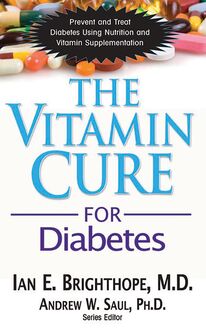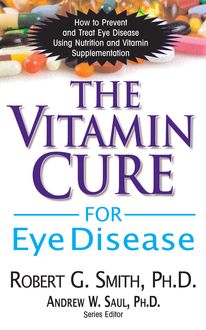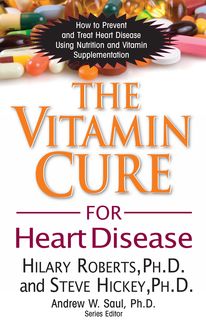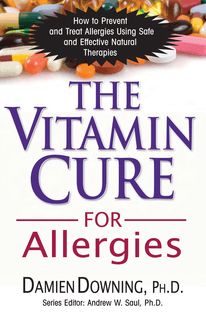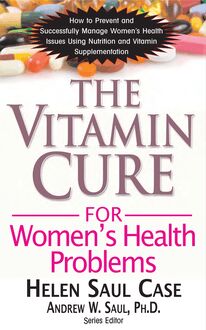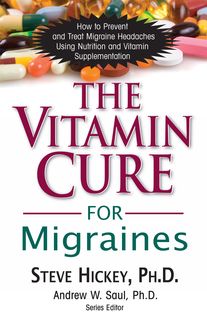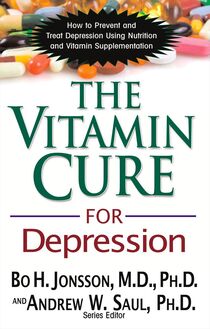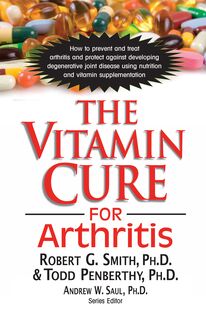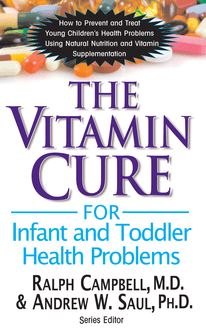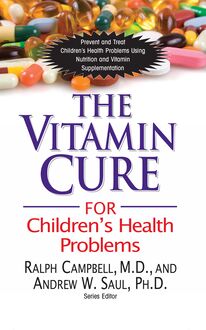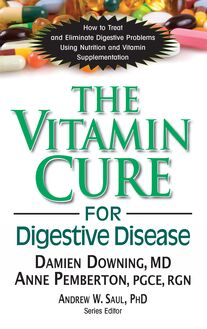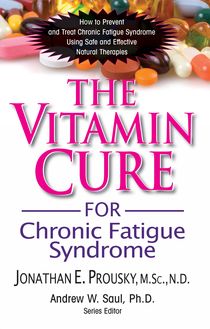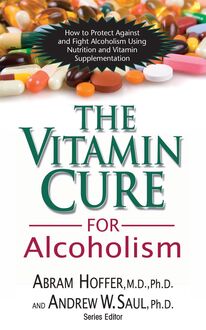The Vitamin Cure for Allergies , livre ebook
90
pages
English
Ebooks
2010
Vous pourrez modifier la taille du texte de cet ouvrage
Obtenez un accès à la bibliothèque pour le consulter en ligne En savoir plus
Découvre YouScribe en t'inscrivant gratuitement
Découvre YouScribe en t'inscrivant gratuitement
90
pages
English
Ebooks
2010
Vous pourrez modifier la taille du texte de cet ouvrage
Obtenez un accès à la bibliothèque pour le consulter en ligne En savoir plus
Publié par
Date de parution
15 décembre 2010
Nombre de lectures
3
EAN13
9781591205197
Langue
English
Publié par
Date de parution
15 décembre 2010
Nombre de lectures
3
EAN13
9781591205197
Langue
English
T HE V ITAMIN C URE
for Allergies
D AMIEN D OWNING
The information contained in this book is based upon the research and personal and professional experiences of the authors. It is not intended as a substitute for consulting with your physician or other healthcare provider. Any attempt to diagnose and treat an illness should be done under the direction of a healthcare professional.
The publisher does not advocate the use of any particular healthcare protocol but believes the information in this book should be available to the public. The publisher and authors are not responsible for any adverse effects or consequences resulting from the use of the suggestions, preparations, or procedures discussed in this book. Should the reader have any questions concerning the appropriateness of any pro cedures or preparation mentioned, the authors and the publisher strongly suggest consulting a professional healthcare advisor.
Basic Health Publications, Inc. 28812 Top of the World Drive Laguna Beach, CA 92651 949-715-7327 • www.basichealthpub.com
Library of Congress Cataloging-in-Publication Data
Downing, Damien.
The vitamin cure for allergies / Damien Downing.
p. cm.
Includes bibliographical references and index. ISBN 978-1-59120-519-7
1. Allergy—Popular works. 2. Vitamin therapy—Popular works.
I. Title.
RC585.D69 2010 615'.328—dc22
2010018684
Copyright © 2010 Damien Downing
All rights reserved. No part of this publication may be reproduced, stored in a retrieval system, or transmitted, in any form or by any means, electronic, mechanical, photocopying, recording, or otherwise, without the prior written consent of the copyright owner.
Editor: John Anderson Typesetting/Book design: Gary A. Rosenberg Cover design: Mike Stromberg
Printed in the United States of America
10 9 8 7 6 5 4 3 2 1
C ONTENTS
Introduction
CHAPTER 1: What is an Allergy?
CHAPTER 2: Allergies That Kill
CHAPTER 3: Avoiding Inhalants
CHAPTER 4: Avoiding Foods and Chemicals
CHAPTER 5: Genes, Pollution, and Diet
CHAPTER 6: Nutrition for Allergies
CHAPTER 7: Exercise and Lifestyle Changes
CHAPTER 8: Desensitization and Other Options
Conclusion
Resources
References
About the Author
I NTRODUCTION
A llergies are no fun. I know this because I spent my high school years spaced out on antihistamines every summer, otherwise I wouldn’t have been able to see the exam papers because of sneezing and watering eyes. And that was a long time ago; believe me, allergies have gotten a lot worse since then (but I’m much better, thank you for asking). Experts now admit we’re in an allergy epidemic.
Throughout the developed world, the number of people with allergies has been rising for fifty years—and rising steeply for the last twenty years. Everybody is at risk. There’s been a massive increase in children with a dangerous peanut allergy; in fact, kids are the worst hit with all allergies. Every year, the U.S. Centers for Disease Control and Prevention, in Atlanta, carries out a National Health Interview Survey. Two years ago, they focused on allergies and found that between 1999 and 2005, the number of those under eighteen years old being admitted to the hospital with allergies more than trebled in just six years. 1
Our medical system can’t cope—many allergy cases are misdiagnosed and people often don’t find relief even when they are treated. Or if they are helped by drugs, it’s often at too high a price in side effects.
The good news is that there is so much you can do for yourself to make allergies better, and this book will help you.
THE MISERY OF ALLERGIES
You’re probably already familiar with the misery that allergies can cause. Symptoms can include sneezing, itching, bloating, and headaches. Severe allergic reactions can even cause anaphylactic shock, which, if left untreated, could lead to death.
Allergies can be caused by a wide variety of things. The most common categories are:
• Inhalants—pollen, animal dander, molds, etc.
• Foods—wheat and milk are the most common examples.
• Chemicals—solvents, gasoline, smoke, perfumes, etc.
WHAT CAN BE DONE?
Fortunately, there are a number of things you can do to help prevent and relieve your allergies.
Avoid
Once you have figured out what sets you off, stay away from it. Obvious, but not always simple. How do you avoid pollen in high summer? Or mold in a damp house? How do you stay off bread and all wheat products when you’re trying to feed a hungry family? We’ll answer these questions.
You also want to remove anything to which you react, not only from your environment but from your body too. This is most important with the chemicals, where you may need special detoxification methods to get them out. Foods generally take around forty-eight hours to pass through the gut, and for all that time you are potentially exposed to them and may react. We’ll discuss diets, detoxing, and supplements and herbs that can help.
Protect
You can use nutrition to damp down the symptoms of allergies when they happen, and also to prevent them from happening in the first place. A number of nutrients have proven effective in treating allergies, including vitamins C and D, essential fatty acids, and magnesium. I’ll tell you when it’s safe to use nutrition, and when it’s likely to be effective.
Desensitize
When all else fails, or doesn’t work well enough, you can consider desensitization techniques. Like a vaccination, desensitization involves giving a small dose of something to which you are allergic in order to reduce your immune system’s reaction. There are a number of desensitization options, including homeopathic formulas, neutralization, and enzyme-potentiated desensitization (EPD). These aren’t always successful (any more than vaccination is), but there’s probably an excellent chance that one of these techniques will work for you.
YOU CAN FIND RELIEF FROM ALLERGIES
I’m a doctor, qualified in 1972, and living and working in London. I left the British National Health Service in 1980 to get back my clinical freedom—the right to treat patients in the way the patient and I agreed was best, not according to some official “guideline.” I’m now in an integrated medicine team with other doctors, including a naturopath, an osteopath, and a Chinese medicine specialist. I’m also the president of the British Society for Ecological Medicine, and I spend a great deal of time researching and writing about the environment and our health.
I have seen many patients with allergies and sensitivities, and I’ve treated them with many of the methods that are explained in this book. I’ve seen these treatments work and provide profound relief to patients in my practice. I am confident that by reading this book and incorporating these methods into your own life, you too will find relief from your allergies.
CHAPTER 1
W HAT IS AN A LLERGY?
A textbook definition of allergy has been argued about among doctors and scientists for over a hundred years now. Just during the time that I’ve been a doctor, we have seen the idea of food allergies come out of nowhere to be accepted, although the “old guard” of doctors still like to restrict the term allergy to symptoms like asthma and eczema, and they refer to “food intolerances” rather than food allergies. If you suffer from allergies, you don’t give a hoot what they call it. In this book, I’m going to cover allergies, intolerances, sensitivities, and anything else you like to call them, so the exact medical definitions don’t work. The dictionary definition of allergy is a damaging immune response by the body to a substance, especially pollen, fur, food, or dust, to which it has become hypersensitive. In other words, an allergy is any encounter with something from the environment that gives you symptoms.
How do you know it’s an allergy? Common allergy symptoms may include sneezing, wheezing, itching, bloating, cramps, lack of energy, sleepiness, irritability, trouble concentrating, and headaches. But each of these can be caused by other things than allergies, so an allergy should be suspected when exposure to something in particular gives you the symptoms. For example, you walk through a park and start to sneeze; or you eat eggs or another food and you start to bloat; or you get in a taxi with one of those air fresheners and you get a sore throat or a headache.
TYPES OF ALLERGIES
There are three common categories of things to which you can be allergic: inhalants, foods, and chemicals.
Inhalants
Pollens, animal fur, molds, and dust mites are the main inhalants. They are carried from plants and animals through the air, and you breathe them in. The “portal of entry” is the nose and throat (and eyes), and this is where the symptoms happen, mostly. These are the “classic” allergies that conventional medicine has recognized for a long time, and it has a reasonable understanding of the mechanisms involved. These types of allergies barely existed back before humans developed industry and its subsequent pollution, and they still happen more in urban areas than in the country. But only now are we starting to understand why.
Foods
There probably isn’t a single food that has never caused an allergic reaction, but the ones that cause the most allergies are the ones that appear most in our diet, and particularly the ones that are in prepared foods, often without you knowing about it. Wheat and milk products are at the top of the list, along with food colorings. Twenty-five years ago, most doctors thought the idea that people might have allergies to foods was ridiculous, but now they have to admit it is real. Allergists still like to call most reactions to foods “intolerances” to distinguish them from the classic allergies, which is fair enough for a scientist looking at mechanisms, but does nothing for the sufferer. It should never be used to suggest that intolerances are less serious.
Chemicals
Solvents, perfumes, gasoline and exha
